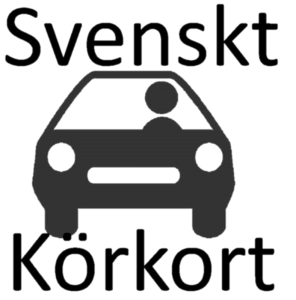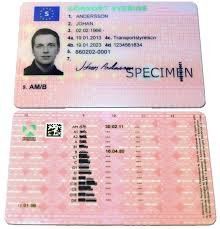14 Common Misconceptions About The Traffic Authority
페이지 정보

본문
 Traffic Laws and the Traffic Authority in Boras
Traffic Laws and the Traffic Authority in Boras The traffic authority in Boras offers a variety of advantages to companies that desire to establish themselves in the city. These consist of a good location, the presence of long recognized e-commerce companies and research centers.
The traffic authority in Boras offers a variety of advantages to companies that desire to establish themselves in the city. These consist of a good location, the presence of long recognized e-commerce companies and research centers.The city is also a major railway junction. The Coast-to-Coast line from Gothenburg to Kalmar goes through the town hall, as do the Alvsborg and Viskadal lines. All traveler trains stop at Boras train station.
Traffic law
A traffic law is a set of guidelines that govern the behavior of pedestrians, ridden animals, cars, street cars and trucks, and other conveyances while on public roadways. Traffic laws are indicated to guarantee safety and fairness on the road. They likewise protect the rights and property of citizens. Traffic laws are comprised of numerous areas, each dealing with particular issues.
A minimum of 22 single motorbikes fitted with bora-bora (modified mufflers) were seized during a simultaneous operation of the Traffic Management Center and Traffic Group in Davao City on Wednesday. This was in compliance with Mayor Rodrigo Duterte's order to confiscate all mufflers that discharge loud sounds, which breach the annoyance law.
Navigate Boras and beyond with a rental automobile from Europcar. With a convenient location and a broad selection of lorries, it's easy to make the many of your journey.
Traffic signs
If you're going to drive in boras, you need to be familiar with the traffic signs that are found on roadways and other public spaces. The function of these signs is to inform road users about road guidelines and policies. The signs likewise serve as standards that drivers should follow to guarantee their safety. Traffic indications have various functions, from indicating the speed limit to directing the direction of the car. They likewise provide info about the road conditions, such as avalanche warnings and school zones.
The traffic indications on a highway are set up according to their significance and area. For instance, an end sign indicates that the rules of a specific road apply approximately the point where it is erected. In addition, a direction indication suggests how to get to a particular location (town, hospital, and so on). Extra panels on these indications give additional details.
A few of these traffic signs are designed with symbols on a yellow background, while others feature black symbols and a rhombus-shaped background. The meanings of these signs are typically described in a language that's simple to comprehend. Some of these indications are managed by national federal governments, while others are not. In some cases, the international neighborhood has established requirements for tunnel signage.
Another important traffic indication is the do not pass sign, which cautions road users that passing in an approaching lane is prohibited. This sign is typically posted on two-lane highways that are divided into a death and an oncoming lane. It's often hard to see this check in poor weather condition conditions or in the evening, that makes it specifically hazardous for motorists.
Other traffic indications include cross-out U-turn and left turn arrows. The former suggests that you can not make a U-turn in a crossway area and is utilized to prevent congestion. The latter is used to prevent crashes between cars entering and exiting the very same lane. Traffic lights are also necessary for assisting drivers, but they can be difficult to check out in bad weather or at night. The light colors on these signals may not be visible in the dark, and their brightness can be affected by snow or rain. Fortunately, numerous traffic signal can be adjusted with a push-button control or by the driver.
Traffic lights
Traffic lights are a typical sight at crossways and pedestrian crossings. They use a universal color code to suggest when it is safe to drive or stroll. They may be mounted on poles situated at street corners, körkortsfoto borås hung from wires strung over the road, or installed within big horizontal gantries that extend external and over the right-of-way. A few of these gantries have a lit up sign showing the name of the cross-street, while others have a flashing light on the corner or near each intersection to alert drivers that there is a signal ahead.
In many countries, a traffic signal indicates that all vehicles should stop; a green one means that traffic can proceed with caution. The colors of the lights are also generally a little various to make them easier to recognize. This helps people with red-green color blindness. Some traffic signals also feature a flashing yellow, which indicates that drivers should proceed with care if they can do so safely.
There are several types of traffic control systems in usage around the world, however they all share particular basic qualities. A lot of are controlled by a computer system that determines the length of time each stage needs to last. The control system can likewise differ depending upon the kind of road, time of day, and other aspects.
Many municipalities have systems that allow emergency cars to disrupt the traffic light. These are generally reserved for ambulances and cops squad cars and trucks, but can likewise consist of some public transportation lorries such as buses and trains. Nevertheless, there have been concerns that unauthorized individuals may have the ability to get gadgets to trigger the preemption of traffic control.
The majority of traffic lights are arranged in trines discs that show all instructions simultaneously, with a separate green left or right "filter" arrow that lights up either individually of the primary green (enabling turns at an otherwise traffic signal) or in addition to it to show that contrasting traffic has been stopped and trafikverket jönköPing förnya körkort trafikverket körkort - hop over to this site - turning traffic does not need to yield (understood as a protected turn in England).
There is a variety of traffic control from place to place, and they vary in how they are positioned and utilized. They might be mounted on upright poles at street corners or hung from wires that run over the road. They might be set up in a circle, a square, or on a horizontal gantry that covers the entire intersection. Some have unique features for pedestrians or level railway crossings, and trafikverket jöNköping förnya körkort some are integrated to operate in tandem with other traffic controls.
Road safety
A significant goal in road safety is to avoid mishaps resulting in deaths and serious injuries. This needs a holistic approach, in which all parts of the system need to be adjusted to match the abilities and needs of the road users. This consists of the design of roadways, vehicles and drivers. The traffic authority in Boras utilizes several different approaches to attain this, including speed minimizing devices, road markings and signage, and Trafikverket jönköping förnya körkort behavioural procedures.
Pedestrians are a susceptible group on the roadways, so it is necessary to take special care of them. In addition to avoiding accidents, they need to also be informed about their rights and responsibilities. This is particularly important in crosswalks, where pedestrians have priority. Cars and truck drivers should likewise know their commitments to pave the way to pedestrians at zebra crossings. This is essential since a change in Swedish law in 2000 reinforced the commitment of vehicle drivers to pave the way to pedestrians.
In order to avoid wildlife mishaps on the highways, trafikverket jönköping Förnya körkort has actually constructed a number of animal fences along roads 27. These are located in between Svenljunga and Boras, as well as on the part of the road that runs through Vastra Gotaland county. In particular, this road has a high danger of wildlife mishaps due to its rush hour and relative absence of protective procedures.
Other road safety steps in Boras consist of the installation of a new road tunnel ventilation system. The system has actually been developed to fulfill EU safety requirements, and is anticipated to lower tunnel fires in Boras by 2025. In addition, the tunnel's fire detection and alarm will assist to improve emergency situation response times.
The city of Boras has a strong facilities, and numerous commercial business lie in the region. For instance, a big manufacturing plant for Mini-Link microwave radios lies in Boras. The town's economy likewise benefits from a close partnership with the University of Boras and SP, Sweden's largest technical research study institute.
A considerable proportion of the city's workforce is utilized in the transport market. The city is home to a large range of companies, from large shipping and logistics firms to small companies. In addition, the city has a strong network of health care and education organizations. Its municipal structure consists of 16 administrative departments, which are accountable for performing the activities chose by the governing bodies.
- 이전글Collection Of Addresses And Links Strategies From The Top In The Industry 25.02.17
- 다음글See What Link Login Gotogel Tricks The Celebs Are Using 25.02.17
댓글목록
등록된 댓글이 없습니다.
